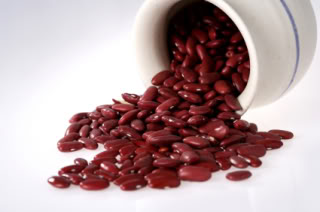Plant foods are good for you. They are loaded with beneficial vitamins, minerals, and antioxidants. But most plant foods, including greens, grains, nuts and legumes, contain chemicals that are not good for you. They can be quite bad. In some cases they can actively harm you. These little devils are called “anti-nutrients”.
If you are saying “ugh, what is going to kill me next” or “I can’t eat anything anymore”, I totally understand. I was also exasperated upon learning about anti-nutrients. The good news is that most plant foods certainly do more good than harm (otherwise vegetarians wouldn’t live longer than the rest of us!) and traditional preparation and cooking methods can and will deactivate or at least mitigate these chemicals.
So, anti-nutrients. I’m talking specifically about phytic acid, oxalic acid and lectins. Phytic acid is a chemical that naturally exists in nuts, seeds, and grains. It binds itself to zinc, iron, calcium and magnesium and thus prevents your body from absorbing them. Oxalic acid is present in spinach, rhubarb, beet greens and swiss chard and prevents calcium absorption.
Then there are lectins. Lectins are present in legumes and grains, especially wheat, soybeans and kidney beans. They are surprisingly nasty buggers – they’re what makes ricin so lethal. Lectins are carb-binding proteins that are believed to have something to do with natural plant defense against predators and disease. They’re “sticky” and can bind to cells in your intestines, causing damage. Damage from lectins can cause leaky gut, which occurs when inflammation and intestinal damage results in gaps in the intestinal lining. These gaps allow particles of food to pass through and enter the blood stream, where they then cause havoc – attaching to organs and causing an immune respons. Leaky gut can result in food allergies and may contribute to autoimmune diseases such as insulin dependent (type I) diabetes and rheumatoid arthritis. This BMJ article, spurred by acute food poisoning from the lectins in kidney beans, discusses specifically how lectins could cause these diseases. Lectins are the primary reason why paleo eaters avoid legumes.
So I’ve vilified green vegetables, nuts, seeds, and legumes. Everything we know to be the healthiest foods on the planet! There is good news, I promise.
- Phytic acid is neutralized by soaking, sprouting, and fermentation. Soak grains (whole wheat, spelt, brown rice) in a warm and slightly acidic solution before preparing. Just squeeze a little lemon in the water, or add a little apple cider vinegar. When that becomes second nature try sprouting. It’s really easy – you just soak, then let the grains hang out damp for a while until they grow little sprouts. Fermentation is also excellent – especially if you like sourdough bread.
- Oxalic acid can be a pest, but it doesn’t mean you have to avoid spinach. Cooking mitigates it, and it doesn’t reduce that amount of calcium you’ll get from other foods. But, I recommend against eating too many high-oxalic acid raw foods (swiss chard, for example), and don’t depend only on these greens for your calcium.
- Lectins are also reduced by soaking and sprouting. Absolutely do not eat under-cooked beans. Soak beans and legumes overnight, or go the extra mile and try sprouting. I just sprouted some lentils, allowing the sprouts to just begin to emerge, and made lentil soup with them as usual. The benefit of all this soaking and sprouting is that they cook much faster – in only 5 to 10 minutes vs. 30 plus. Let the sprouts grow a little longer and you can eat them raw – very nice during hot summer weather!
If you want to get the full benefit from your plant foods, don’t forget to consider the role of anti-nutrients. These pests could be at play if you’re eating clean and still experiencing digestive problems and less than optimal health. These steps could even allow you to eat foods that you previously thought weren’t suitable for you! So there’s some good news. Soaking/sprouting takes a little planning, but luckily takes very little active time.
Eat Happy!
